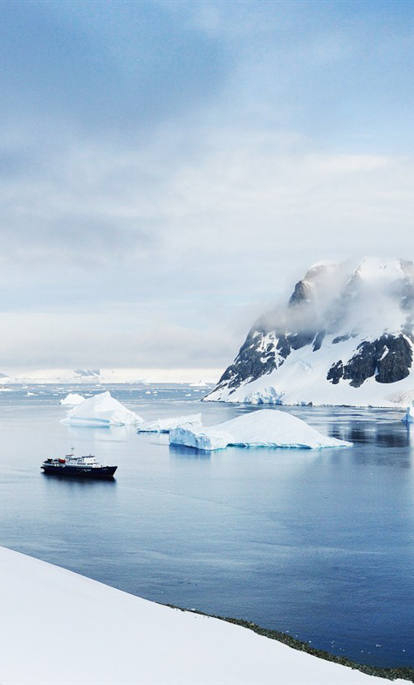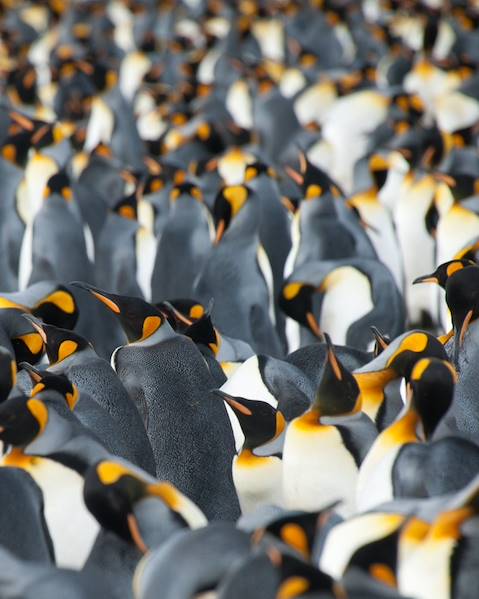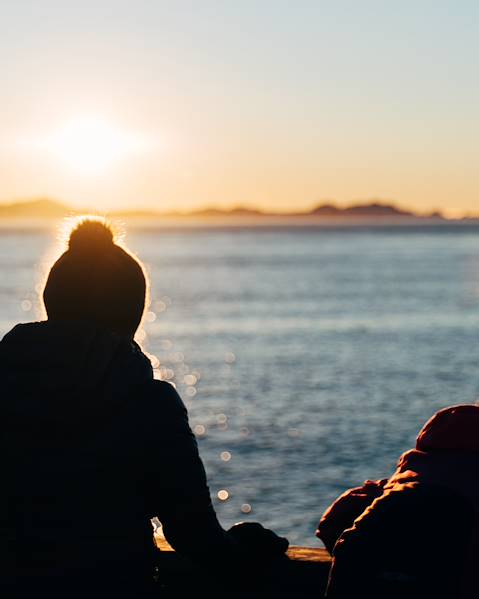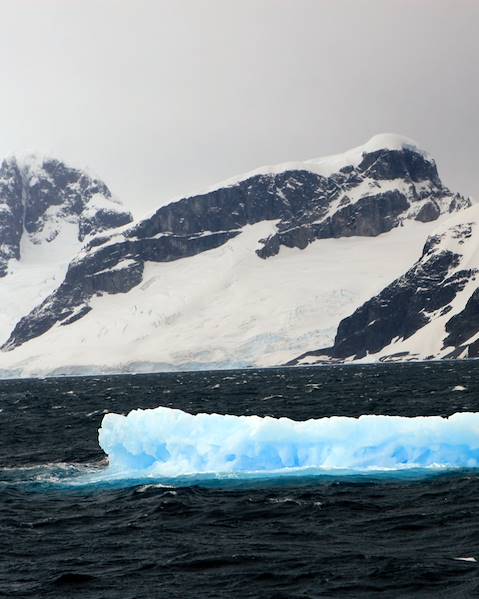Fly to the South Pole
Everyone knows the boy's own adventure tales of heroism involving those great polar explorers of the early 20th Century, Shackleton, Scott and Amundsen, who strove to reach the South Pole, some never to return.
Over one hundred years later, and despite vast technological innovations, the Antarctic conditions are still so harsh in winter that there is no permanent habitation at the South Pole but, and it's a big but (and a big cost) - it is now possible to reach the South Pole without the need for months hard graft trekking across the harsh white desert.
The solution comes in the shape of a skiplane, which flies a strictly limited number of lucky guests to the pole for a visit to reflect on the extraordinary achievements of mankind in reaching this spot, a commemorative photo at the actual Ceremonial Pole and a fascinating visit to the research centre.
This true once in a lifetime experience is the highlight of a week-long set departure trip as follows:
- Day 1 - Flight to Antarctica from Punta Arenas in Chile. The private transport flight lasts 4.5 hours before landing on an ice runway at the temporary camp
- Day 2 - Acclimatise at camp with the option to partake in a few activities
- Day 3 - The big day. Fly on to the Geographic South Pole for a memorable few hours before the return flight to camp
- Days 4 to 6 - Explore Antarctica from the camp. The daily programme of activities includes activities like cross country skiing, trekking, exploratory walks, Antarctic survival skills sessions and fascinating talks on this extraordinary region. The hearty food in camp is excellent and designed to provide enough energy for the activities on offer
- Day 7 - return flight to Punta Arenas and transfer to your hotel there. Please bear in mind that conditions in this part of the world are unpredictable, so schedules and plans are often subject to change. With this in mind we strongly recommend you make no formal plans for the week after returning to Chile
Why We Love It
Standing at the Ceremonial Pole marking the southernmost spot on Earth - by walking around it you technically circumnavigate the world by crossing the 360 lines of longitude.
Standing at the Ceremonial Pole marking the southernmost spot on Earth. By walking around it you technically circumnavigate the world by crossing the 360 lines of longitude.
Ski the Last Degree
It seems barely a week goes by without some celeb or other testing themselves to the limit on a journey to explore one of the polar regions, but despite this perception of ubiquity it's still an amazingly small number of people who have ever been to the South Pole, let alone skied there hauling their own equipment.
Those who have achieved this once-in-a-lifetime goal tend to have done so for charity, planning things months in advance and taking weeks on end to get there from the coast of Antarctica, but we'll let you in on a little secret - we know a way to ski to the South Pole in under two weeks, so you can enjoy testing yourself to the limit without having to take a huge chunk of annual leave off. So, an excellent short cut to ticking off a big bucket list activity, and we obviously encourage everyone to keep the charity angle in there too, because this is still a serious undertaking.
So, what's involved? After a couple of days acclimatising to Antarctic conditions at a comfortable basecamp, and then a two-day mini-expedition, participants are flown by skiplane to an airstrip at 89° South ready to ski the last degree, which equates to 60 nautical miles, to the Geographic South Pole. The group take all their own equipment, packed in to lightweight pulks or sleds that are pulled along by the team who use cross-country skis. The last degree ski should take five days, with nights spent in lightweight yet tough mountaineering tents and meals consisting of meals pre-prepared at the basecamp, culminating in an emotional arrival at the southern-most point on Earth.
One final word - we've mentioned short cuts, but one element of the trip that can't be circumvented is fitness. The trip requires participants to ski in a destination where extreme weather conditions and terrain are the norm. You will be skiing for anywhere up to eight hours a day, pulling a heavy load (about 30kgs) and often across wind-sculpted ice ridges known as sastrugi. In addition to physical fitness, you will require a high level of mental stamina to complete the journey, so signing up for this trip should not be undertaken lightly. You will need to commit to a specific training regime in advance of the trip, but there are very few experiences more worth the effort than reaching the South Pole under your own steam as the explorers of old did.
Tempted? Here is a short itinerary for how the trip will pan out:
- Day 1 - Flight to Antarctica from Punta Arenas in Chile. The private transport flight lasts 4.5 hours before landing on an ice runway at the temporary camp
- Day 2 - Acclimatise at camp, get to know the equipment and prepare for the mini-expedition
- Day 3 to 4 - The mini-expedition, involving practice marches, pacing and navigation, as well as training in pitching a field camp for the night. Then return to basecamp.
- Day 5 - Fly by skiplane to the 89°S, 60 nautical miles from the South Pole, and camp for the night.
- Days 6 to 10 - the real mission begins, with the entirely self-sufficient team hauling their own supplies and equipment to the Geographic South Pole, and gradually increasing the exertion to about eight hours' a day by Day 10. This is all about a supreme team effort, with the group trying to maintain a tight formation by day, and jointly helping set up camp and cook meals at the end of each day.
- Day 11 - The Amundsen-Scott research station is often visible from as far as 15 miles out and spurs the expedition on to reach their goal - the Geographic South Pole. After soaking up the sensation of being at a destination so remote it was only reached for the first time by any human just over one hundred years ago the team camps overnight.
- Day 12 - Return flight to basecamp for some much needed R&R, the chance to enjoy activities and a celebratory dinner.
- Day 13 - return flight to Punta Arenas and transfer to your hotel there. Please bear in mind that conditions in this part of the world are unpredictable, so schedules and plans are often subject to change. With this in mind we strongly recommend you make no formal plans for the week after returning to Chile.
Why We Love It
Standing at the Geographic South Pole, which was only reached for the first time just over 100 years ago, is a phenomenal feeling. Knowing you've had to work so hard to get there makes that feeling all the better.Standing at the Geographic South Pole, which was only reached for the first time just over 100 years ago, is a phenomenal feeling. Knowing you've had to work so hard to get there makes that feeling all the better.
















